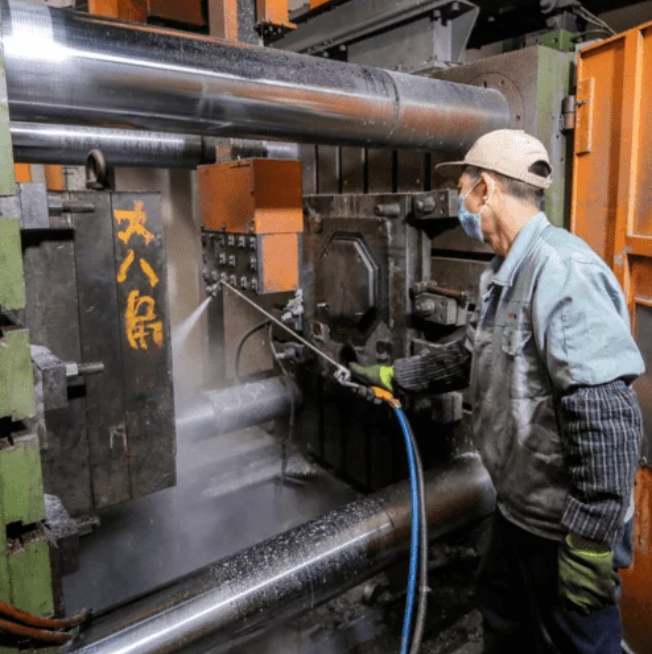Introduction:
The aerospace industry has always been at the forefront of technological advancements. From the early days of aviation to the modern era of space exploration, manufacturers continually strive for excellence in aircraft performance, efficiency, and safety. One critical aspect of aerospace manufacturing is the production of high-quality castings that meet the stringent requirements of the industry. In this article, we will explore the innovative techniques and precise manufacturing processes that enable the achievement of excellence in aerospace casting.
1. Investment Casting:
Investment casting, also known as lost-wax casting, is a widely used technique in aerospace casting. It involves creating a wax pattern of the desired part, coating it with a ceramic shell, and then melting the wax to leave a cavity. Molten metal is then poured into the cavity, taking the shape of the original wax pattern. This technique allows for complex shapes and intricate details, making it ideal for aerospace components like turbine blades and structural parts.
To enhance the quality of investment castings, manufacturers have adopted advanced technologies such as 3D printing and computer-aided design (CAD). 3D printing enables the production of highly precise wax patterns, reducing the need for manual labor and improving dimensional accuracy. CAD allows for the optimization of casting designs, ensuring that the final product meets the required specifications.
2. Directional Solidification:
Directional solidification is a process used to control the solidification of molten metal during casting. By carefully controlling the cooling rate, manufacturers can manipulate the microstructure of the casting, resulting in improved mechanical properties and reduced defects. This technique is particularly crucial for aerospace castings as it enhances their strength, fatigue resistance, and heat resistance.
One method of achieving directional solidification is through the use of ceramic molds with a controlled cooling system. The mold is designed to extract heat from the casting in a specific direction, allowing for controlled solidification. Additionally, the use of advanced simulation software aids in optimizing the cooling process and reducing the likelihood of defects such as shrinkage and porosity.
3. Vacuum Casting:
Vacuum casting is another technique commonly employed in aerospace casting. It involves pouring molten metal into a mold while maintaining a vacuum environment. The absence of air prevents the formation of gas bubbles and reduces the risk of oxidation, resulting in high-quality, defect-free castings. This process is essential for manufacturing critical aerospace components that require impeccable structural integrity, such as engine components and landing gear parts.
To further enhance the vacuum casting process, manufacturers have implemented automated control systems and advanced sensors. These systems ensure precise control of the vacuum level, temperature, and pouring speed, minimizing the risk of casting defects and improving overall productivity.

4. Non-Destructive Testing:
Aerospace castings must undergo rigorous inspection to ensure adherence to strict quality standards. Non-destructive testing (NDT) plays a vital role in identifying potential defects without compromising the integrity of the casting. NDT techniques, such as X-ray, ultrasonic, and magnetic particle testing, allow manufacturers to detect internal and surface defects that may compromise the performance or safety of the aerospace component.
Continuous advancements in NDT technologies have led to improved detection capabilities, faster inspection times, and higher accuracy. Automated systems integrated with artificial intelligence algorithms enable real-time defect recognition, reducing human error and enhancing the overall inspection process.
Conclusion:
Achieving excellence in aerospace casting requires the implementation of innovative techniques and precise manufacturing processes. Investment casting, directional solidification, vacuum casting, and non-destructive testing are crucial elements in producing high-quality castings for the aerospace industry. As technology continues to evolve, manufacturers must continually adapt and improve their processes to meet the ever-increasing demands of the aerospace sector. By embracing innovation and maintaining a focus on precision, the industry can ensure that aerospace castings continue to meet the highest standards of performance, reliability, and safety.
-

- Ruota di bicicletta per parti di fonderia in lega di magnesio con lavorazione CNC e finitura superficiale
-

- Parti UAV tixomolding in lega di magnesio pressofusione
-

- Ciclo per bambini all'ingrosso in lega di magnesio per bambini da 3 a 5 anni Ciclo per bambini da 12 pollici OEM a buon mercato
-

- Parti e componenti pressofusi OEM
-

- Forcella ammortizzata ultraleggera per MTB
-

- Parti pressofuse in lega di alluminio e magnesio Copricatena per automotive

 0086-750-5616188
0086-750-5616188 +86 13392089688
+86 13392089688 sales@zhongmei-tech.com
sales@zhongmei-tech.com








